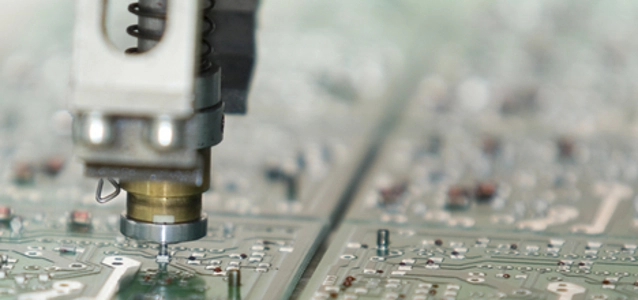
© andrzej thiel dreamstime.com
Business |
New Growth Opportunities for Electroactive Polymers
IDTechEx Research finds that the electroactive polymer (EAP) market will be US$ 245 million in 2013.
The materials have been used for some time in actuators, capacitors and nanocomposites but, with new recent technical progress, come new growth opportunities – despite several decades of R&D and first applications, the EAP field is still far from mature. Why is this?
Challenges, such as performance, long-term stability and reliable mass production, need further development to tailor the properties to the requirements of each target application. The market potential as forcasted by IDTechEx Research is as high as US$ 2.25 billion by 2018, dominated by consumer electronics, actuators and sensors applications.
EAP introduction
EAPs are part of the broad group of smart materials. The use of polymers with electroactive response has only emerged in the last decade with the introduction of new materials which have significant displacement levels. These materials are highly attractive for their low-density, large strain capability, superior spectral response, and resilience.
In general, the biggest advantages over conventionally used systems in most application fields are the intermittent displacement they can provide, an adaptable stiffness combined with variable size and form factors from micrometers to meters. Companies like Artificial Muscle (AMI) of Bayer MaterialsScience and Strategic Polymers (SPS) have been able to tune the properties even further.
AMI’s were able to eliminate the issues with high driving electric fields. Their dielectric EAP based actuator has an average power consumption of just 1.5mW and already passed mobile qualification tests. And SPS’ PVDF terpolymer based EMP actuators show comparable high deformation strain in the range of 0.5-2.5%.
Large variety of applications
The market potential is large - EAPs can be used in various applications including actuators and sensors, biomimetics and robotics, energy harvesting and storage devices etc. Dielectric sensors are already in use for a wide range of applications, eg. surface or bulk measurements sensors. Especially in the actuators segment vast R&D activity can be seen for specialized applications such as medical devices and biomimetic-robotics.
Here the features of electroactive polymers are used to enable movement and generate force as well as electrically control surface properties. However, these are very demanding makets, with high performance requirements and also restrictions especially in the medical field, which is why it will take at least five more years before revenues grow significantly.
Existing markets
Already in fairly high production are dielectric elastomer materials commercially available from sources like 3M, and also piezoelectric fluoropolymer (PVDF), that is used in actuators, nanocomposites, capacitors etc. However, these materials are not universally suitable. Especially for dielectric elastomers the main issue hindering the wide-spread application is the high operating voltage required. New growth needs to come from new innovation - improved materials suitable for less demanding high-volume applications, such as consumer electronics and large-area thin-tilm sensors.
Focus on haptics
Today, with touchscreens everywhere it almost seems natural to expand the user experience with better feedback. Implementation of EAPs for haptic feedback, especially for handheld touchscreen devices and peripherals, is the current new market focus. First prototypes have been introduced by Strategic Polymers and Artificial Muscle of Bayer MaterialsScience.
Compared to inertial actuators currently the standard, EAP ones have the advantage of being able to just move the touch screen, and having a high bandwidth necessary for high-fidelity touch feedback. One of the biggest challenges at the moment however is the cost of EAP devices in consumer electronics. This is why high-fidelity and large screen applications will come first.
The energy harvesting chance
Research is on-going in this medium to longer term opportunity, where EAP based systems can be used to harvest the energy from sea waves. In comparison to conventionally used hydraulic systems, electroactive polymer ones offer lower production costs and higher durability.
IDTechEx forecasts
IDTechEx estimates the electroactive polymer market volume to grow almost tenfold in the next 5 years, dominated by consumer electronics (38%), actuators and sensors applications. The most prominent application is haptics for portable consumer devices with a touch screen. Sensors, i.e. large-area ones and medical applications will come next. For energy harvesting applications, especially from ocean waves, it will take another decade until the market will see first commercial penetration.
Outlook
Actuators and sensors are the most common application for electroactive polymers today and will remain prominent in the next five years. The highest potential lies in new application fields, such as consumer electronics, where first prototypes and evaluation studies have been just recently demonstrated. For medical and energy harvesting applications the next 5-10 years are crucial. Intensive R&D towards better efficiency, long-term stability, salt-water resistance and up-scale of production from laboratory state to commercial production is needed.
